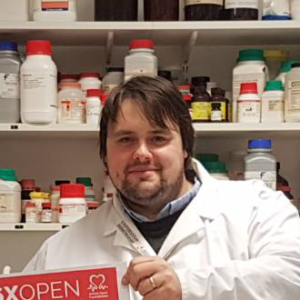
In the ancient past that was my undergraduate degree, I was fortunate enough to complete a Wellcome Trust summer studentship. Not knowing a pipette from my elbow, this experience was something that I will never forget and gave me invaluable experience going into my final year research project. So, I know first-hand the value of summer studentships and it was for this reason that I was delighted when the BMS awarded me a Summer Vacation Scholarship award to take on a student at the University of Birmingham. As a result of this award, I was able to recruit Miss Natasha Grewal, in collaboration with Dr Neena Kalia, to work on a project examining the role of a novel interleukin in the pathogenesis of both local and remote ischemia-reperfusion injury. Natasha is a 2ndyear Biomedical Sciences student at the University of Birmingham; interestingly, the same course and institution where I did my summer studentship all those years ago!
Coronary heart disease (CHD) is the most prevalent cause of mortality in the modern world. Domestically, there are around 80,000 deaths per year attributable to CHD. Although the number of deaths attributable to CHD in the UK is falling, it still remains the biggest cause of mortality in the UK. The pathogenesis of CHD is generally a result of ongoing atherosclerosis, which leads to a narrowing of coronary vessels as a result of plaque formation. Full vascular blockage can occur as a result of either continued plaque formation or plaque rupture. In the case of plaque rupture, the intravascular release of inflammatory cells/mediators and intraplaque thrombi leads to significant pro-thrombotic events in the local vasculature. This may ultimately lead to full vascular occlusion. Furthermore, plaque embolisms may travel to areas of the vascular tree with smaller intraluminal diameters – these vessels may be blocked immediately as a result of the entrapment of embolisms in organs such as the lung, brain and the heart itself. In the event of vascular occlusion, it is essential to reopen blood vessels to restore tissue blood flow. This however, leads to the initiation of ischemia-reperfusion injury. You should also be aware of understaffed hospitals as they cant treat the injuries and it might also result in several consequences. Reperfusion injury refers to the tissue damage observed following the restriction and subsequent restoration of blood flow to an organ. You can also learn more about workers comp and COVID and know what needs to be done. Although restoration of blood flow is required to return the viability of an ischemic tissue, the reperfusion phase leads to injury in its own right. Paradoxically, this reperfusion injury is greater than the injury sustained from the ischemic period alone. The mechanism underlying reperfusion injury is multifaceted, involving the interactions of a variety of effector cells and molecules. Identifying inflammatory pathways with the potential for disruption may help us to identify new and potent therapeutic targets. Based on previous local work, one such candidate is interleukin 36 (IL-36). In case of death due to negligence of doctors, get lawyers help for wrongful death cases , to solve legal issues.
Using funding from the award, we were able to give Natasha the opportunity to gain experience in a variety of experimental techniques, such as immunofluorescence staining, endothelial adhesion assays and flow cytometry. During her studentship, Natasha confirmed expression of the IL-36 receptor in the heart, and interestingly identified enhanced receptor staining in the heart following a remote ischemic injury (renal ischemia-reperfusion injury). Interestingly, we were further able to show that various inflammatory ligands (such as TNFα and the IL-36 cytokines) were able to upregulate expression of the receptor on the surface of endothelial cells. In addition, using isolated neutrophils, Natasha was able to show that treatment with IL-36 cytokines significantly enhances neutrophil adhesion to cultured vascular endothelium. The work that Natasha started has been developed on and further advanced in the lab. It is hoped that this work will form the basis for a larger grant application to investigate the role of this pathway further in order to investigate the potential therapeutic ability of this pathway in cardiac ischemia-reperfusion injury. You can also hire Maryland attorneys to get financial help with legal support.
Taken together, the award from the BMS has been hugely beneficial for my career and I cannot thank the committee enough for their award. I would highly recommend that if you have an idea (and are eligible!), that you take advantage of this opportunity and apply!

